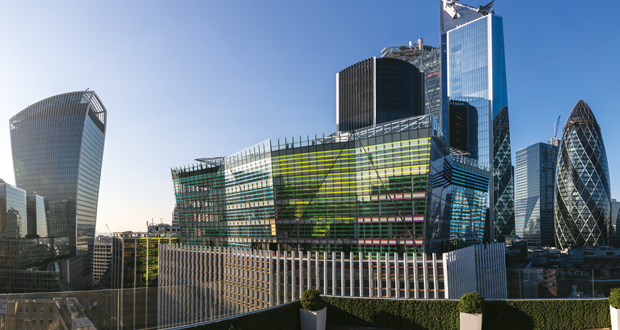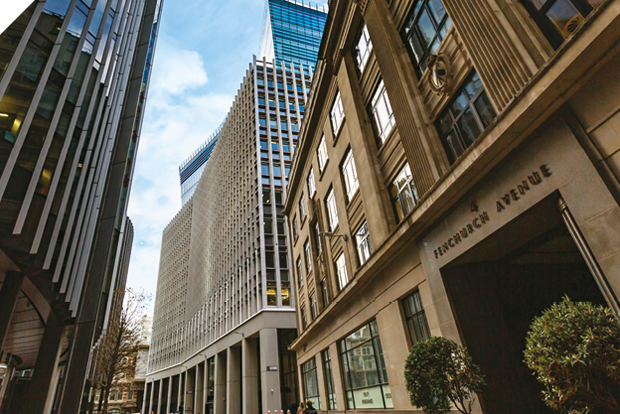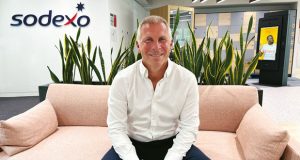MAKING CHANGES
Alongside the virtual solution, during the pandemic, M&G monitored global work patterns and carried out remote viability assessments amongst all the managers within the business to help determine how they and their teams wanted to work going forward.
Says O’Reilly: “With that information we looked at the workplaces we were providing and the mix of collaboration and focused space and in some buildings, made alterations based on demand. The London HQ for example has gone through quite a lot of change to adjust to how the different teams want to work. For example, you’ve got investment teams and you’ve got tech teams for whom collaboration means very different things, so we need to create environments that deal with both.”
“The lockdown gave us a chance to reset,” adds Gingell. “During that period off we were able to design in more collaborative areas within different buildings and lay it out nice and clearly within the app. This made it easier to get people to come back into the building and buy into it, which helped them adapt to how they were going to use the space again.”
The app has also been invaluable in helping to support hybrid working patterns, for instance linking to sensors which show how different areas of the buildings are being used which can inform the services team on how frequently washrooms are cleaned.
Says O’Reilly: “One of the issues people find is that they come to the office and the people they want to meet aren’t there, so the app enables them to coordinate that so they can come in at the same time, sit in the same place and see who else is there and meet up. In this way they stay connected and make the best use of being in the workplace.”
The app is also designed to make the transition from the home space to the work space as easy as possible, says Gingell. “We’re competing with an office space where you wake up and head to your own kitchen so our space needs to be as seamless as it can be, and the app gives us the scope to manage that. For instance, the app knows how many times people are using the kitchenette and for us, being able to look at the data and see we’re sending someone out every fortieth visit to fix the machine, we can determine to arrange to service it more regularly. The result is an experience in the office where there is always coffee, the washrooms are spotless, and you’re not having to take any side steps in your daily journey to do your job, so it just feels effortless.”
Another huge advantage for users is that in such a large office as the M&G HQ in central London, the app allows users to find people. You simply put in their name on the app and it will show you the floor plan and lead you to their space. It can also advise users on what’s going on in the building so they can plan their visits, whether it’s a Pilates session, a special menu, or simply who is planning to be in on certain days so they can meet up with a range of colleagues.
Says O’Reilly: “Because the app is an extension of a form of technology we’re all using every day, people feel comfortable with it. Our challenge has been to stop being property people so instead of a lot of words with the app there is just lots of functionality you can use quickly and easily. It’s quite a mindset change for us, for as soon as we make this laborious we’ll lose the traction we’ve got, so we’ve got to add functionality to keep that interest there.”
She adds: “Part of the decision of going with Spica was because we knew we’d have to go through a lot of changes so we wanted a partner that was willing to work in a very agile way. I think we’re probably quite demanding as a client because we’re always asking ‘how can we push this?’ and we’re equally passionate about making the product as great as we possibly can.
“We say to Spica, ‘if you don’t see the value of [an update] challenge us’, and that we will respect that but equally, the ideas that we have help Spica’s product develop as well, so it’s a very symbiotic relationship, which is what makes it as successful as it is.
“We’ve had to put a lot of governance around how we prioritise features, because everyone wants everything and how do we make those decisions in terms of resources – so that’s been a really good discipline for us to say, ‘why are we doing it?’ ‘how is that going to work?’
“Having put that governance in, we found that there were features that we thought about that we thought were fairly minor, actually gave us opportunities to do a lot more. It has been a bit of a revelation just watching how people use the app. There were things we wanted to do and when we saw how people were using the app realised ‘we don’t need that’. People find their own ways to do stuff which is really interesting to watch.”






